|
 Re: No long top plates... Old English cary-over?
[Re: OurBarns1]
#16726
09/03/08 02:26 AM Re: No long top plates... Old English cary-over?
[Re: OurBarns1]
#16726
09/03/08 02:26 AM
|
Joined: Feb 2006
Posts: 332
Housewright

Member
|

Member
Joined: Feb 2006
Posts: 332 |
Yes it is interesting! Too bad the roof design appears to be fundamentally flawed. It looks like the interior ties do not have rafters on them so most of the roof thrust is landing on the plates and they appear (pic. #2) to be rolling outward.
The double tie is very curious. In his book The Pennsylvania Barn, Robert Ensminger has recorded double tie beam construction in Sweitzer barns, but this is a different style.
How can you tell that the plate is interrupted?
Thanks for intriguing us!
Jim
The closer you look the more you see.
"Heavy timber framing is not a lost art" Fred Hodgson, 1909
|
|
|
 Re: No long top plates... Old English cary-over?
[Re: Housewright]
#16728
09/03/08 10:54 PM Re: No long top plates... Old English cary-over?
[Re: Housewright]
#16728
09/03/08 10:54 PM
|
Joined: Feb 2006
Posts: 718
Dave Shepard

Member
|

Member
Joined: Feb 2006
Posts: 718 |
The plate is mortised into the post, and does not pass. Next time I go over there, I'll try to get a pic of a plate to post failure.
Dave
Member, Timber Framers Guild
|
|
|
 Re: No long top plates... Old English cary-over?
[Re: Dave Shepard]
#16749
09/06/08 07:28 PM Re: No long top plates... Old English cary-over?
[Re: Dave Shepard]
#16749
09/06/08 07:28 PM
|
Joined: May 2002
Posts: 447
Will Truax

Member
|

Member
Joined: May 2002
Posts: 447 |
I'd like to see more pics also, specifically one that shows the interruption in the plates.
We see lots of variation in English Tying hereabouts, always interested in another.
Nice find.
|
|
|
 Re: No long top plates...
[Re: Will Truax]
#19929
05/27/09 04:19 PM Re: No long top plates...
[Re: Will Truax]
#19929
05/27/09 04:19 PM
|
Joined: Mar 2008
Posts: 570
OurBarns1
 OP
OP
Member
|
OP

Member
Joined: Mar 2008
Posts: 570 |
I recently visited another "connected girt" (CG) barn. I've learned alot about old barns in the past year or so here on the forum and now look at these CG barns w/ new information, as well as new questions. Like I said in an earlier post here, I've been finding more and more of these CG frames. Not unusual here in southern Maine at all; have found them w/in a 20 mile radius of Portland thus far. I had a eureka moment recently regarding these barns and the "2' mark." This scribed specimen has a hard and fast date of 1816. It's a small 4-bent frame and "under square": 36 wide X 34 deep. 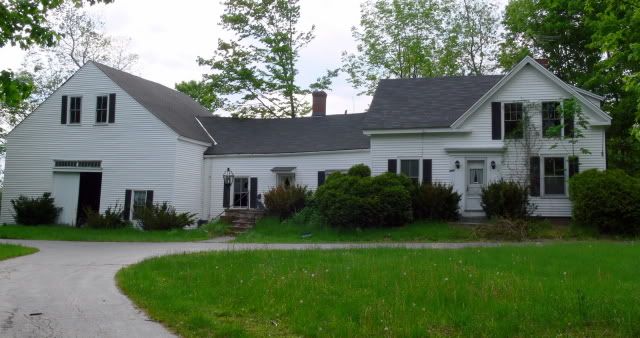 To refresh memories, and for those new to this thread, what's always been of interest w/ these CGs is the fact that there are no top plates. The beefy top girts are the principal frame connectors. 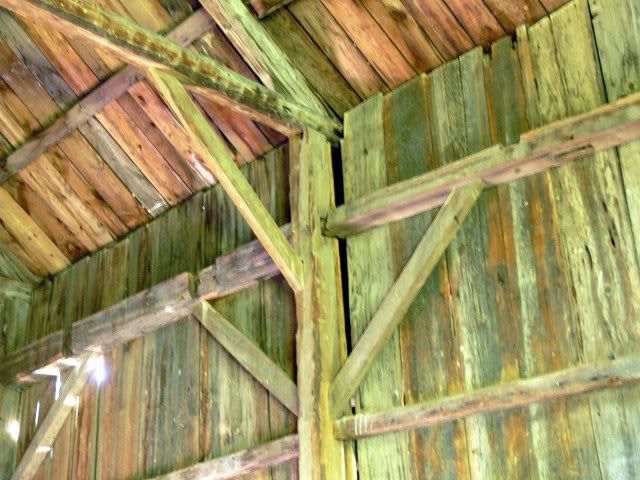 Notice the girts on this barn, they're the most dropped I've seen yet, which brings me to the "2' mark" used in scribed layout. The top edge of the girts are 23" from the top of the post (tenon shoulder). This other scribed CG barn (featured on the tour I hosted last summer) has the bottom edge of the girts 24" from the top of the post exactly. 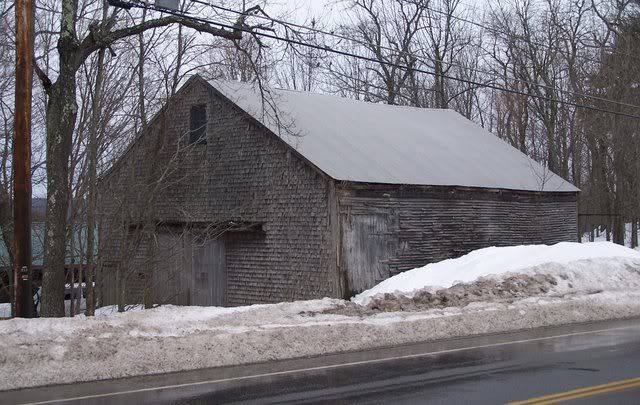 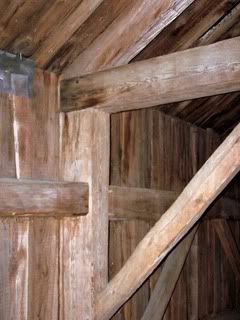 I looked along the posts of the barns from the inside for any evidence of 2' marks, but could only find scratches for mortise layouts. Were 2' marks typically only on the outside (reference face)? Sheathing is covering this face now so hard to tell if the 2' mark theory is anything other than my own enthusiasm. However, not all scribed CG frames have the top girts this low. This barn (also on the tour last summer) has them higher up on the post. 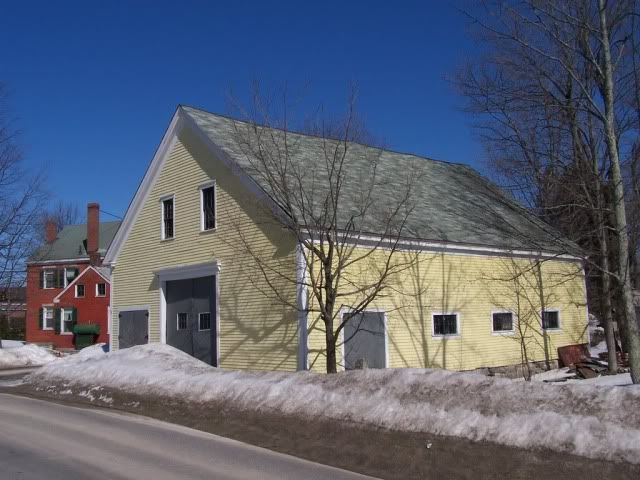 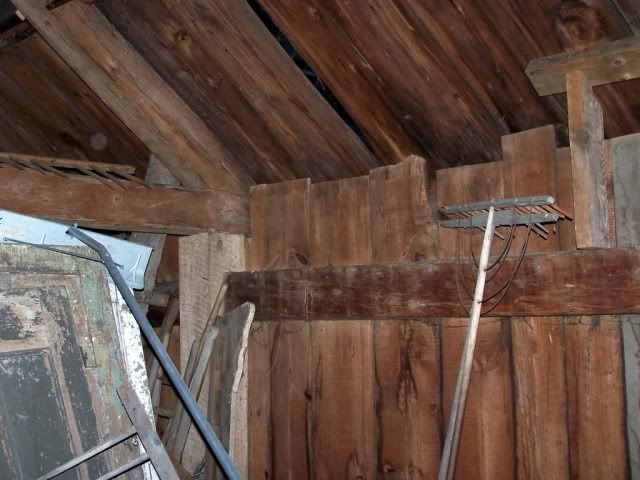 I'm wondering if it was typical for mortises, and thus framing members, to be found at the 2' mark location...or was the mark used primarily for leveling the frame?
Don Perkins
Member, TFG
to know the trees...
|
|
|
 Re: No long top plates...
[Re: OurBarns1]
#19940
05/28/09 10:23 AM Re: No long top plates...
[Re: OurBarns1]
#19940
05/28/09 10:23 AM
|
Joined: May 2002
Posts: 447
Will Truax

Member
|

Member
Joined: May 2002
Posts: 447 |
Don –
A two foot mark is seldom co-incidental with with any joinery, and if it is, it is merely coincidence.
It is typically found two feet – from something. Often top of plate, or interface of tying joint, but there is variation on the theme.
I'm more than curious, and wish to know what key point in a scribed connecting girt barn would have typically been chosen from which to describe the two foots...
An educated guess, but a guess all the same, tells me it is likely top of tie – But we're gonna have to happen upon a number of them, either being dismantled or being resided or somesuch, to have some real sense of what may have been typical.
A two foot is simply a benchmark, a known point established in a first layup (typically two feet from a member that cannot be placed in followup layups) to aid in placement (and insuring proper relationships in geometry) in layups to follow...
As such, they are always found on reference faces, and so, are almost always buried by sheathing or decking.
A level mark, and any struck lines were used to level individual pieces in their layup or progression of layups.
Both marks are part of the layout process, to temporarily represent, to sort of stand in the stead for plumb and level. Neither is used or at least referred to directly in the raising process, but both are the best part of how the frame ended up plumb and level when it was raised.
|
|
|
 Re: No long top plates...
[Re: Will Truax]
#19942
05/28/09 11:21 AM Re: No long top plates...
[Re: Will Truax]
#19942
05/28/09 11:21 AM
|
Joined: Dec 2007
Posts: 1,882
TIMBEAL

Member
|

Member
Joined: Dec 2007
Posts: 1,882 |
Throw in the recycled CGs and there is more questions or chance leading to coincidence.
What are the possibilities for referencing the bench mark, the top of the plate, the top of the tenon, the shoulder, and does it always have ti be 2'? As seen in another thread, there could be the possibility of it being at 4' and at the brace location?
Speaking from no experience in using the 2' mark, I can easily see myself using the 2' mark as a double use mark. Why not place the girt on the same point?
Tim
|
|
|
 Re: No long top plates...
[Re: TIMBEAL]
#19949
05/28/09 03:07 PM Re: No long top plates...
[Re: TIMBEAL]
#19949
05/28/09 03:07 PM
|
Joined: Mar 2008
Posts: 570
OurBarns1
 OP
OP
Member
|
OP

Member
Joined: Mar 2008
Posts: 570 |
Will and Tim:
I know very little about the whole "2 foot mark." If you have some pictures of any on a post please "post" them so I will know what to look for. But good to know that the 2 foot mark typically stood on its own and did not include a mortise location.
Will, finding more of these CG frames (and many of them scribed) is opening up new questions. Because there are no top plates,the question you ask about referencing for the 2 foot mark location is pretty intriguing. And to clarify, I said I've found these barns within a 20 mile radius of Portland..., I should have said they are found north of Portland. I have not explored much south of here.
If anybody else has seen this frame type, please speak up.
Tim, I think you're onto something: the mark doesn't always have to be 2 feet. Sobon's little book "the scribe rule or the square rule" says they are occasionally found at 18 inches. And, yes, why not include the girt at two feet as well?
Sobon includes an excerpt about the 2 foot mark from Edward Shaw's Civil Architecture, 1832:
First, the mortises should be made and the faces got out of wind. Second, after finding the length of the timber, in which the tenons are to be made, for convenience apply the 2 foot square.
Third, take out the size of the mortised timber on the end of the square; suppose 10 inches to be the one mortised, then 14 inches remain on the square; make a distinct mark at the end of the square, which is called the 2 feet mark. Fourth, measure from this mark for the shoulder, 15 inches, which leaves 1 inch to be scribed; after the tenon is made and entered, the mortises in the shoulders are brought together or to a bearing, then cut the shoulders to the scribe, and when put together they will remain out of wind, as when scribed. This process is generally applied to sills, posts, and principal rafters.
Because of the the way this is punctuated and written, I find myself having to read this over and over again in order to grasp it.
What's interesting is Shaw is talking about applying the 2 foot square, meaning a framing square. Wasn't the steel square a new device in 1830 and one that typically did not get employed in scribe rule?
Another point I find interesting is after the fourth step: "which leaves one inch to be scribed." The girts on the white barn are 23 inches from the post's tenon shoulder.
I'll leave it here for now; I have more to discuss/post regarding bracing in these structures later...
Last edited by OurBarns1; 05/28/09 03:12 PM. Reason: couple tweaks
Don Perkins
Member, TFG
to know the trees...
|
|
|
 Re: No long top plates...
[Re: OurBarns1]
#19959
05/28/09 06:10 PM Re: No long top plates...
[Re: OurBarns1]
#19959
05/28/09 06:10 PM
|
Joined: Mar 2002
Posts: 1,687
Jim Rogers

Member
|

Member
Joined: Mar 2002
Posts: 1,687 |
Don:
As I haven't done any scribe rule layout, I maybe wrong about this but I have watched it being done many times.
The reason you leave 1" to be scribed is to have the shape of the top of the post, for example, exactly fit to the underside of a plate. Should the plate's underside have any wane or other slopping surface the top of the post could be exactly fit to it.
And in the quotation you have sited is used the word "wind." It is not use as "the sails were full of the wind...." but to "wind the string around the stick so you can use it to fly your kite...."
It's hard to pronounce the word correctly with text.
Whatever you do, have fun doing it!
|
|
|
 Re: No long top plates...
[Re: Jim Rogers]
#19970
05/29/09 12:56 AM Re: No long top plates...
[Re: Jim Rogers]
#19970
05/29/09 12:56 AM
|
Joined: Mar 2008
Posts: 570
OurBarns1
 OP
OP
Member
|
OP

Member
Joined: Mar 2008
Posts: 570 |
Thanks Jim:
Actually, I get why the 1" is left: to "scribe to fit."
And I also understand "wind." I know he's not talking about the breeze. As I take it, the author is talking about twist in a timber (scribe rule usually was employed w/ hewn stock, which could have some twist simply b/c of being shaped by hand.)
When I built furniture, say a kitchen table, we had two "winding sticks" we'd use to stop the table from rocking when it was finished. It's how we'd level the 4 legs. Winding sticks are very straight sticks used when the table is flipped upside down on a work bench.
You place the sticks across the tips of the upturned legs and sight down the two for any perceptible twist. The sticks show if there is any "wind" in the table...they show what legs need to be sanded down a bit, etc. so the table will sit flat on the floor.
Don Perkins
Member, TFG
to know the trees...
|
|
|
|
|